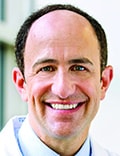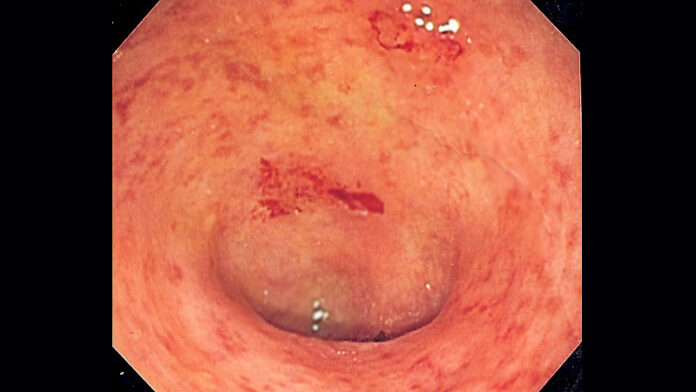[ad_1]

Dr David T. Rubin
The cumulative burden of histologic inflammation is a strong predictor of colorectal neoplasia risk in ulcerative colitis, according to a recent case-control study.
David T. Rubin, MD, was the senior author of the study, which provided independent validation of a metric for cumulative burden of inflammation as a risk stratification tool in ulcerative colitis and presented these findings at the Gastroenterology Updates, IBD, Liver Disease Conference. The metric was developed at St. Mark’s Hospital, London, which he called “a leader in the field.”
“The implication of demonstrating this is that, if you control inflammation and keep it controlled over time, it would imply that you can reduce the overall risk for cancer and dysplasia,” explained Rubin, professor of medicine and chief of the section of gastroenterology, hepatology, and nutrition at the University of Chicago.
The original retrospective St. Mark’s study included 987 patients with extensive ulcerative colitis followed with colonoscopic surveillance for a median of 13 years. Each colonoscopy was scored for severity of microscopic inflammation on a 0-3 scale. The investigators calculated a patient’s cumulative inflammatory burden by adding each histologic inflammatory activity score and multiplying that figure by the surveillance interval in years.
In a multivariate analysis, the London investigators demonstrated that the risk of colorectal neoplasia jumped by 2.1-fold for each 10-unit increase in cumulative inflammatory burden, defined as the equivalent of either 10 years of continuous mild active histologic inflammation, 5 years of continuous moderate inflammation, or 3.3 years of continuous severe inflammation.
The University of Chicago retrospective external validation study included 26 ulcerative colitis patients with colorectal neoplasia and 36 others without cancer. The mean cumulative histologic inflammatory activity score in the group with colorectal neoplasia was 12.63, compared with 7.98 in controls. For each 1-unit increase in cumulative inflammatory burden the risk of developing colorectal neoplasia increased by 8%, consistent with the magnitude of the hazard previously reported at St. Mark’s.
“The way you could take this back to your practice is by thinking carefully about what is the degree of inflammation each time you’ve done a colonoscopy and considering whether the patient who is in deep remission and doing well might deserve a longer interval between their next exam and the one you just completed,” according to the gastroenterologist.
“The most interval I give a patient is 3 years – for somebody in deep remission with no inflammation on the last exam. And when they’ve had prior inflammation but are now doing well, I keep in mind what that prior inflammation was. We’re now working on using that cumulative histologic inflammation score to guide intervals, but we don’t have prospective data to validate this approach. So when you’re not sure, the conservative approach is surveillance colonoscopy every 1-2 years after you’ve had 10 years of disease. That’s probably overutilization of our resources, but we don’t have a better way to do it yet,” Rubin said.
The novel metric for calculating cumulative histologic inflammation burden as a means of predicting colorectal cancer in ulcerative colitis dovetails with the current emphasis upon individualized risk assessment as recommended in the latest American College of Gastroenterology practice guidelines, for which Rubin was first author.
“Like we individualize our treatments, we should individualize our colorectal cancer screening and prevention strategies,” he emphasized.
Risk factors for colorectal cancer and dysplasia in patients with ulcerative colitis can be grouped as either potentially modifiable or immutable. Potentially modifiable risk factors include backwash ileitis, pseudopolyps, prior dysplasia, and mass or stricture, as well as the degree of histologic inflammation. Immutable risk factors include younger age at diagnosis, male gender, duration and extent of disease, family history of colorectal cancer, and primary sclerosing cholangitis, Rubin noted.
He reported receiving grant support from and/or serving as a consultant to more than two dozen medical companies.
This article originally appeared on MDedge.com, part of the Medscape Professional Network.
[ad_2]
Source link












